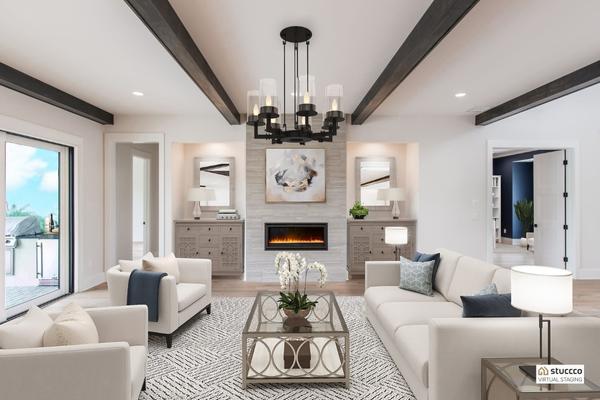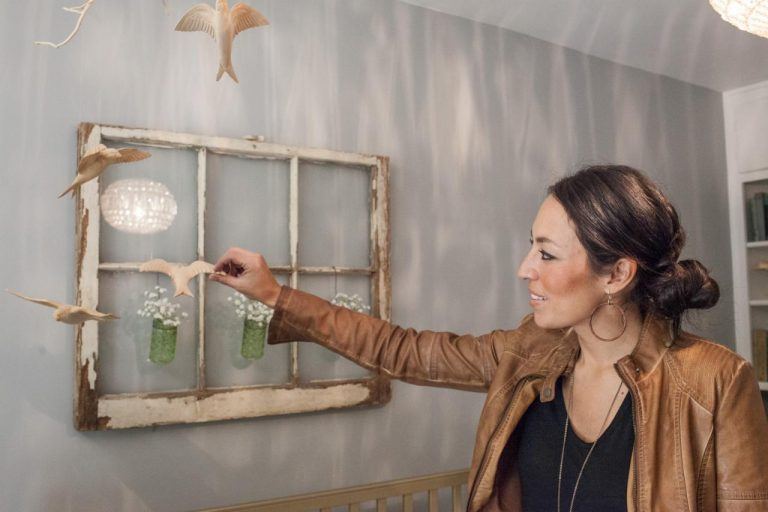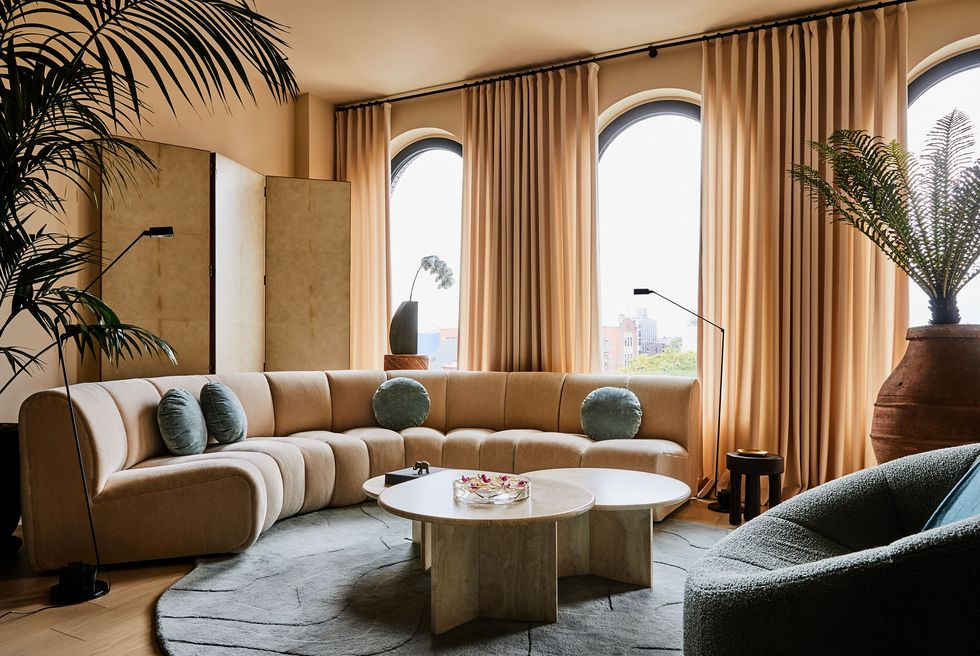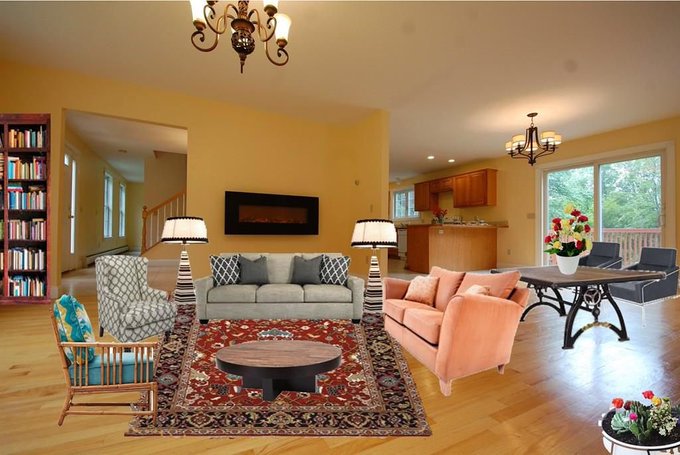What is Home Staging? 5 Answers to Your Staging Questions
Most people are familiar with the idea of home staging on TV, but they have some major questions about how it works in real life. This guide will cover the top questions about home staging, including its definition, types of staging, alternatives, and costs.
Here's what we'll cover:
- What is Home Staging?
- How Home Staging Works
- Home Staging Options & Alternatives
- How Much Home Staging Costs
- Who Pays for Home Staging?

What is Home Staging?
Here is the simplest definition of home staging: Home staging is strategically setting up the furniture, decor, layout, and color scheme in a home to be most appealing for a specific audience or purpose.
There are a number of other times and ways that home staging is used, so let's dig a little deeper to understand why the term can be confusing.
Staging a Home for Real Estate vs. Staging a Home for Interior Design
Home staging is most often used to describe the process of getting a property ready for sale on the real estate market. This is what almost every professional staging company specializes in because it takes a highly specific and specialized skillset.
However, "staging" can be used in many additional contexts that may or may not require professional skills or home staging services.
For example, if you take photos or videos to post on social media or an online blog, you most likely spend at least a few minutes adjusting your decor or even moving clutter out of the background of the shot. This is technically a form of staging!
When local photographers take family photos, they choose a location or a backdrop with specific items, colors, or textures. They are staging their backgrounds for the best possible result.
On HGTV, the last five minutes of every show usually involves the interior designers or home flippers adding or rearranging furniture and decor in the home before they list it for sale or welcome the homeowners back in. This is home staging.
In fact, sometimes the homeowners don't get to keep any of the furniture that's shown on TV!
In interior design magazines, every photo is staged to look the most beautiful and grab your attention, whether it will be viewed online or in print.
In these cases, whether the work is being done by a professional stager, photographer, or a regular person, the home (or space) is being set up for a specific purpose. The process in each example can involve similar tasks, but with a very different result.
For instance, rooms staged for interior design magazines are hardly ever spaces that are actually lived in. In fact, they are often designed to grab attention or to sell specific pieces.
On the other hand, the purpose of professional home staging for properties for sale is to attract more real estate buyers and sell the home for the maximum value.
This kind of home staging is NOT done by simply making a room look beautiful. There are many people with no interior design training or experience who are naturally skilled at making spaces look beautiful. It's an incredible skill, but it, unfortunately, does not equate to actually increasing the price of a home.
Home staging professionals must have a deep understanding of the real estate market, the psychology of staging, and specialized interior design training. These skills together help them determine the most appealing layout, placement, and scale of any room for potential buyers. They are extremely familiar with what buyers want in a house, what drives the value up, and what attracts more prospective buyers to an online real estate listing.
Interestingly, staging a home for real estate often means using less vibrant colors, patterns, or unique furniture than the home might typically have. Although most of the general public might prefer to see a room with some kind of "wow" factor or eye-catching design, that doesn't always align with the ultimate purpose of home staging: to sell the home for the most money.
It can be confusing to many people, but the most skilled home stagers know exactly how to stage a home to sell vs. stage a home for beauty.
This is why some people think that staged homes aren't as visually interesting as some spaces you'll see on Pinterest, Instagram, in magazines, or on TV. It's because they have a very distinct and powerful purpose.
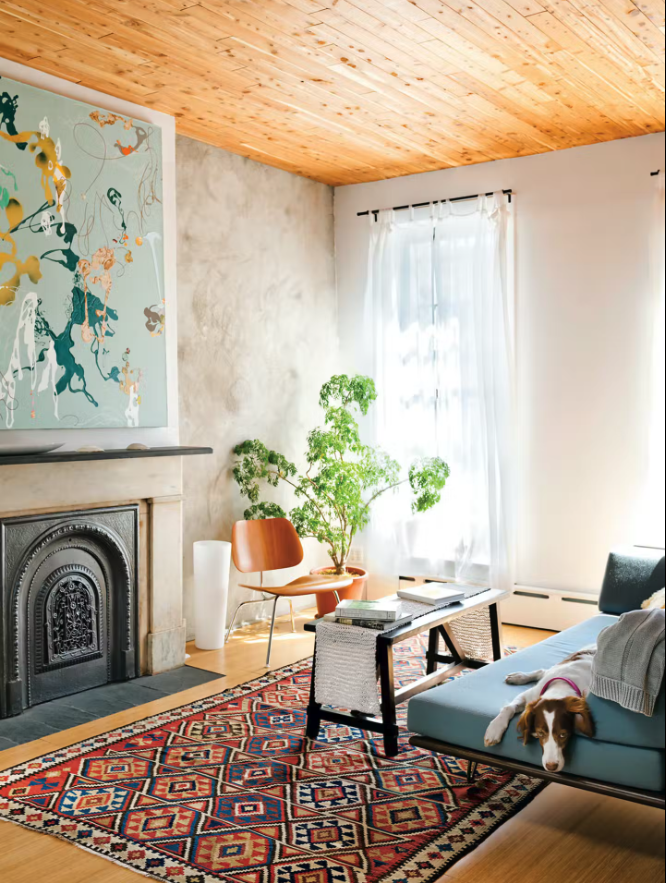
Living room staged for print via Dwell Magazine
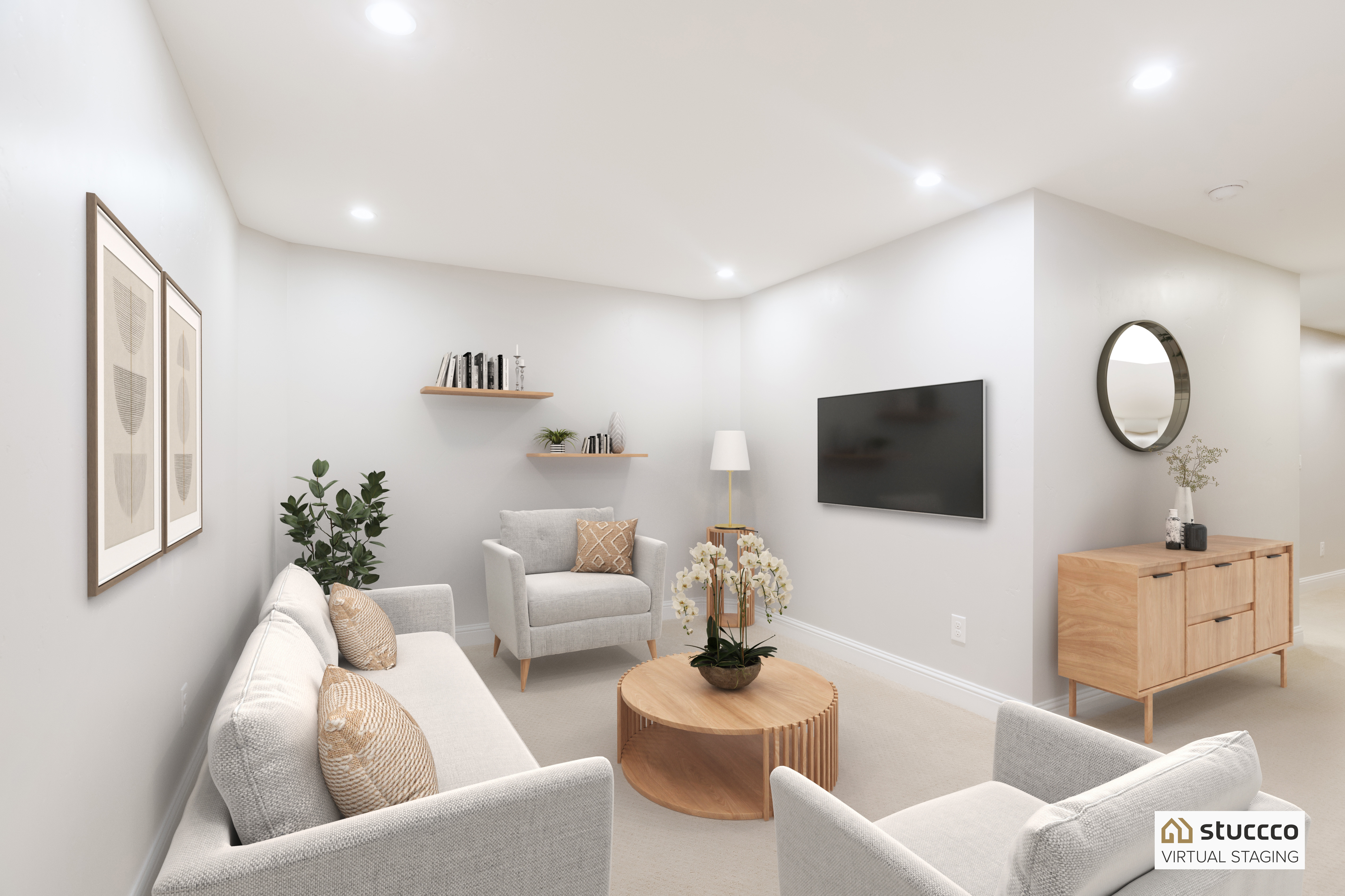
Living area virtually staged for real estate via Stuccco
When a room is staged with the right expertise and the right pieces, home staging statistics show that it can increase a home's sale price by tens of thousands of dollars.
In fact, research by Realtor.com shows that staged homes sell 88% faster and for 20% more than non-staged homes.
Many of our clients have seen this themselves, and written about it on the Stuccco review page:
- "After the listing had expired with another agent, it went under contract in 4 days!"
- "I listed a home on a Thursday and had showings start within one hour. In three days there were over 50 showings, and it got six offers over the list price! Multiple buyer's agents commented that the virtual staging encouraged their clients to see the house."
- "Both of the homes I had virtually staged went under contract--one in six days, and another in eight days. Thanks SO MUCH!"
Now that you have a better understanding of what home staging is--and what it isn't--let's discuss the details of how it works.
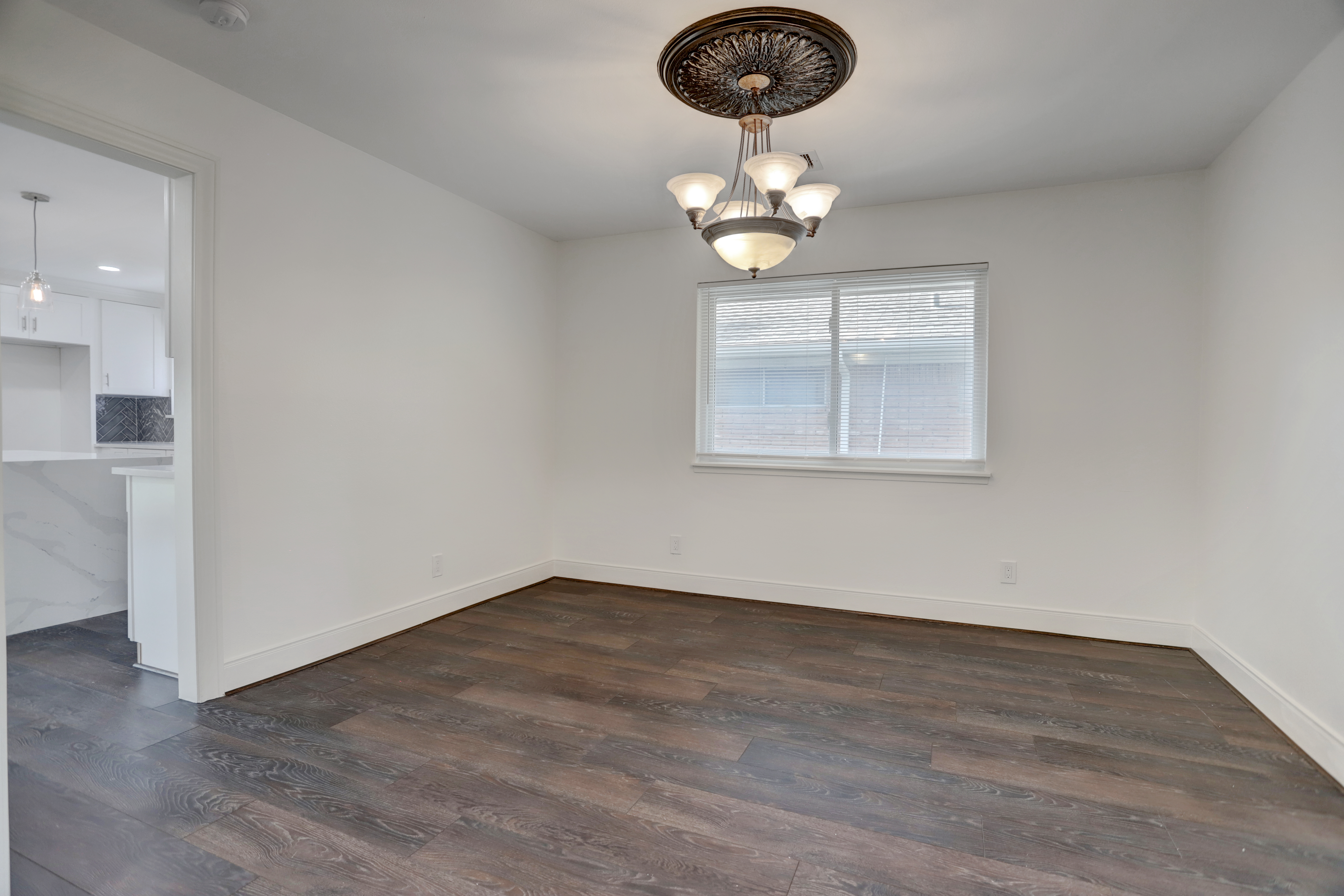
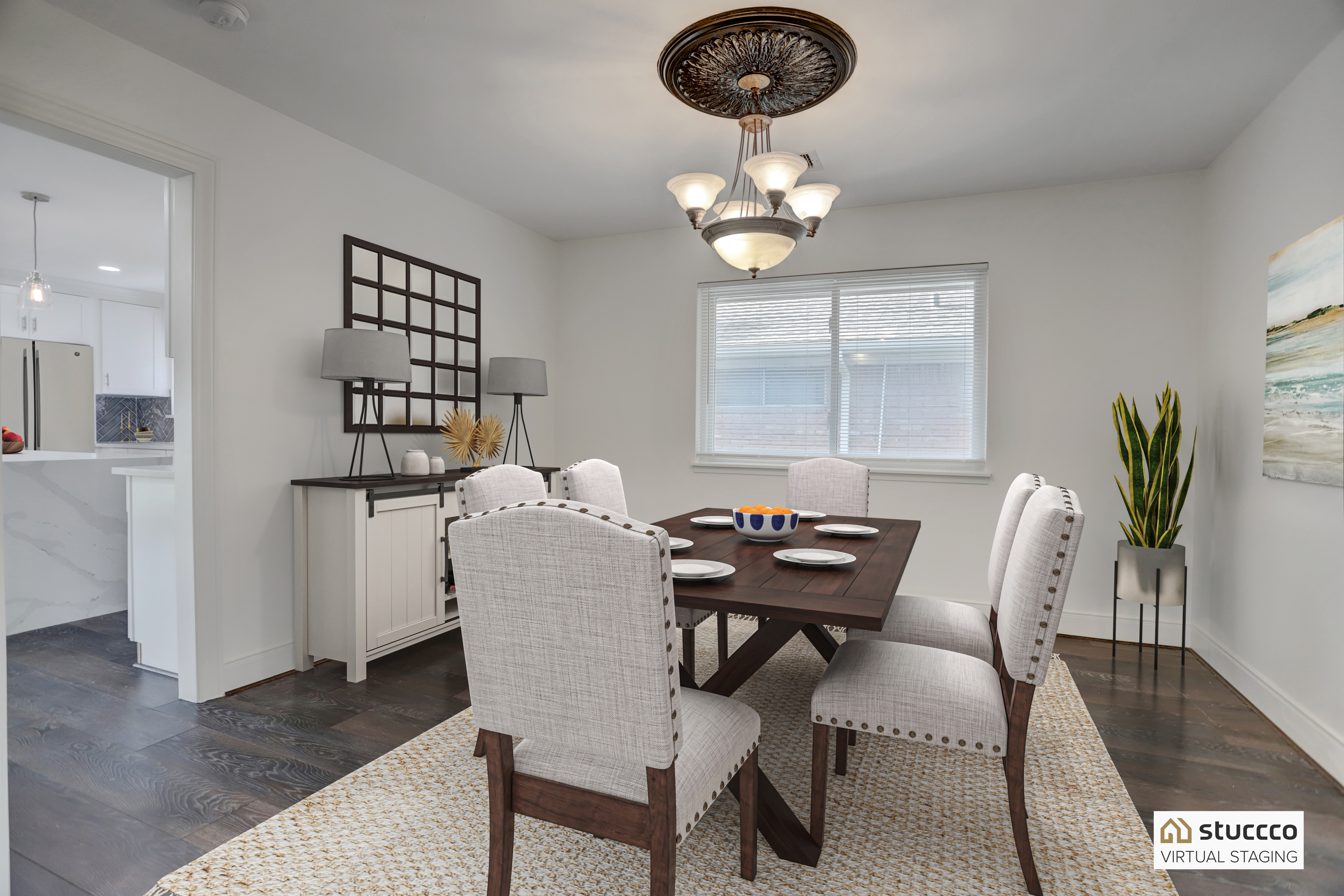
How Home Staging Works
Although most people are familiar with how Joanna Gaines stages a home in about 5 minutes on TV, they have a lot of questions about how home staging works in reality. After all, if the results are so incredible, why isn't every home on the market staged?
The most well-known type of home staging includes bringing physical furniture and decor into a home (which can also include removing existing furniture), then taking listing photos, scheduling showings, and hosting an open house. Once the home is under contact, all of that furniture is removed by the professional staging company. We call this "traditional home staging."
Does it sound like a lot of work? It's probably even more than you think.
The home staging process generally looks like this:
- Find, interview, and hire a home stager
- Decide on a design style
- Schedule a day to stage the home
- Remove current furniture from property
- Bring in staged furniture and decor
- Take property photos and list the home on the market
- Schedule showings and open house
- Accept offers
- Remove furniture and decor after home is under contract
If you've ever moved from one house to another, you know how time-consuming, tiring, and inconvenient it is to move furniture in and out of different homes--even if you work with a moving company! Traditional home staging is just as time-consuming and tiring, with added difficulties of planning every single piece.
In fact, traditional or physical home staging is highly dependent on inventory. Stagers have to plan ahead for every piece of furniture and decor AND keep track of what pieces are available at the right time.
This process depends on the staging company, but some professional stagers have existing inventory, and other rent furniture when they need it. Either way, there are inevitable times with the ideal bedroom set or sofa for a property are unavailable, so the stagers have to go with the next-best choice.
Home staging is an extremely labor-intensive and detail-oriented job--and that's what drives up the costs of traditional home staging.
The good news is that traditional home staging isn't the only way to stage a home.
Home Staging Options & Alternatives
Here are four alternative ways to stage a home for sale that don't involve hiring a company:
- Working with a virtual staging service
- DIY staging with a virtual staging software
- DIY home staging (by the real estate agent)
- DIY home staging (by the homeowner)
Many real estate agents and homeowners in areas with smaller or lower-priced homes choose to "stage" the properties themselves. This very rarely means physically removing or replacing the furniture, but usually means making small adjustments to improve the look and feel of the space.
Some of the best quick-and-easy adjustments include removing unnecessary or outdated furniture, add a few throw pillows, opening or removing window dressings to bring in more natural light, and cleaning up the curb appeal.
These DIY staging options are important because even small changes in a property can have a big impact on the number of buyers the property attracts.
For example, the kitchen shown below has fresh flowers on the counter, a bowl of lemons on the corner, and a few well-placed wooden cutting boards. Although each of these objects are small, they make the kitchen feel welcoming and help potential buyers view the space as their future home.
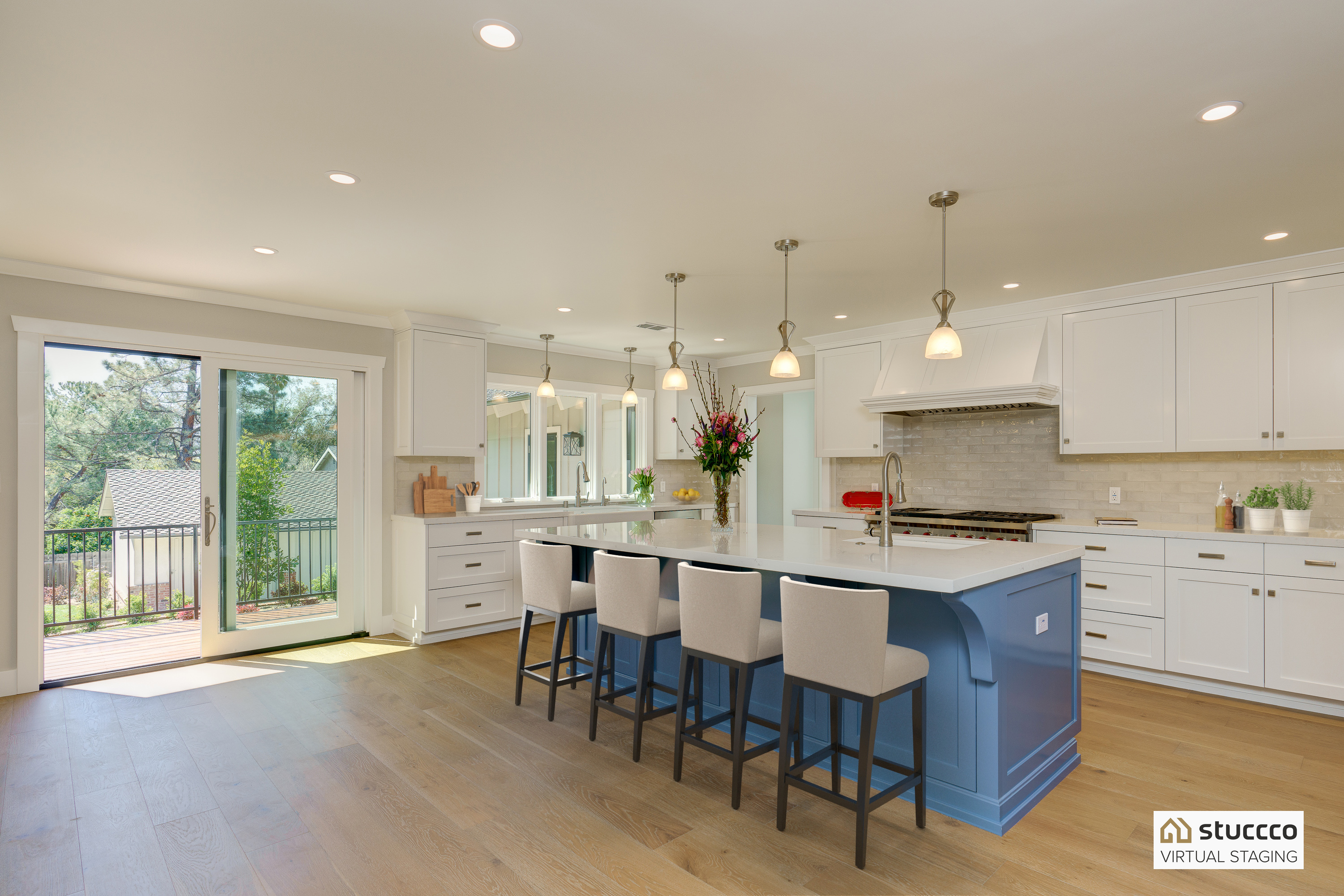
DIY staging was especially useful when the only options that homeowners and agents had were hiring a company for thousands of dollars or doing it themselves.
However, with the growth of technology over the last decade, virtual staging has emerged as an incredibly effective method of staging a home for less money, less time, and less stress.
For more details, read our full guide: What is Virtual Staging?

Virtually staged home office
Virtual staging is the process of adding digital furniture and decor to property photos. This includes vacant homes, rooms with existing furniture, and even interiors and exteriors that need complete renovations. When virtual staging is done by the right professionals and software, it appears so life-like that viewers don't know it's all digital.
Make sure to read our tips to successfully sell houses with virtual staging to take full advantage of the power of virtual staging and avoid any confusion from prospective buyers.
If you're skeptical about the quality of virtual staging or its ability to replace traditional staging, we don't blame you. Not all virtual staging is created equal!
We'll be the first to say that listing photos that are obviously photoshopped will do more harm than good. Here's a perfect example:
We don't need to explain all the problems with this digitally staged living room--it's obvious. The end result actually prevents viewers from being able to see the space instead of showing them the space's full potential.
That's exactly why we strongly recommend avoiding DIY virtual staging software, and instead using a virtual staging service like Stuccco. Not all DIY virtual staging is low-quality, but that's not the only problem with DIY programs.
Even if you find a virtual staging software that is relatively easy to use and provides generally higher-quality images, successful home staging is much more than simply adding furniture to an empty room.
Unless you have specific training on the psychology of home staging, you are very likely to end up spending an extensive amount of time on the computer, and the end result won't actually contribute to the sale of the house.
On the other hand, Stuccco is one of the only virtual staging companies to only work with professional designers and stagers (and not to mention,actually pay them fairly!). Plus, we've been named the best virtual staging company by the Spruce because of our prices, turnaround times, image quality, and actual staging expertise.
Here are a few quick facts about the process of virtual staging with Stuccco:
- Placing an order takes less than five minutes (Read our detailed tutorial)
- Virtually staged designs are completed within 12-24 hours
- Virtual staging can include interior and exterior improvements
- Staging can including adding furniture, removing or replacing furniture, or virtual renovations like changing flooring, wall, colors, appliances, or more
- Every virtual staging order can be customized to your needs and to your design style of choice (Modern, Traditional, Scandinavian, etc)
- Includes free marketing tools like video slideshow generator and single property website
- Unlimited virtual staging revisions for up to 60 days
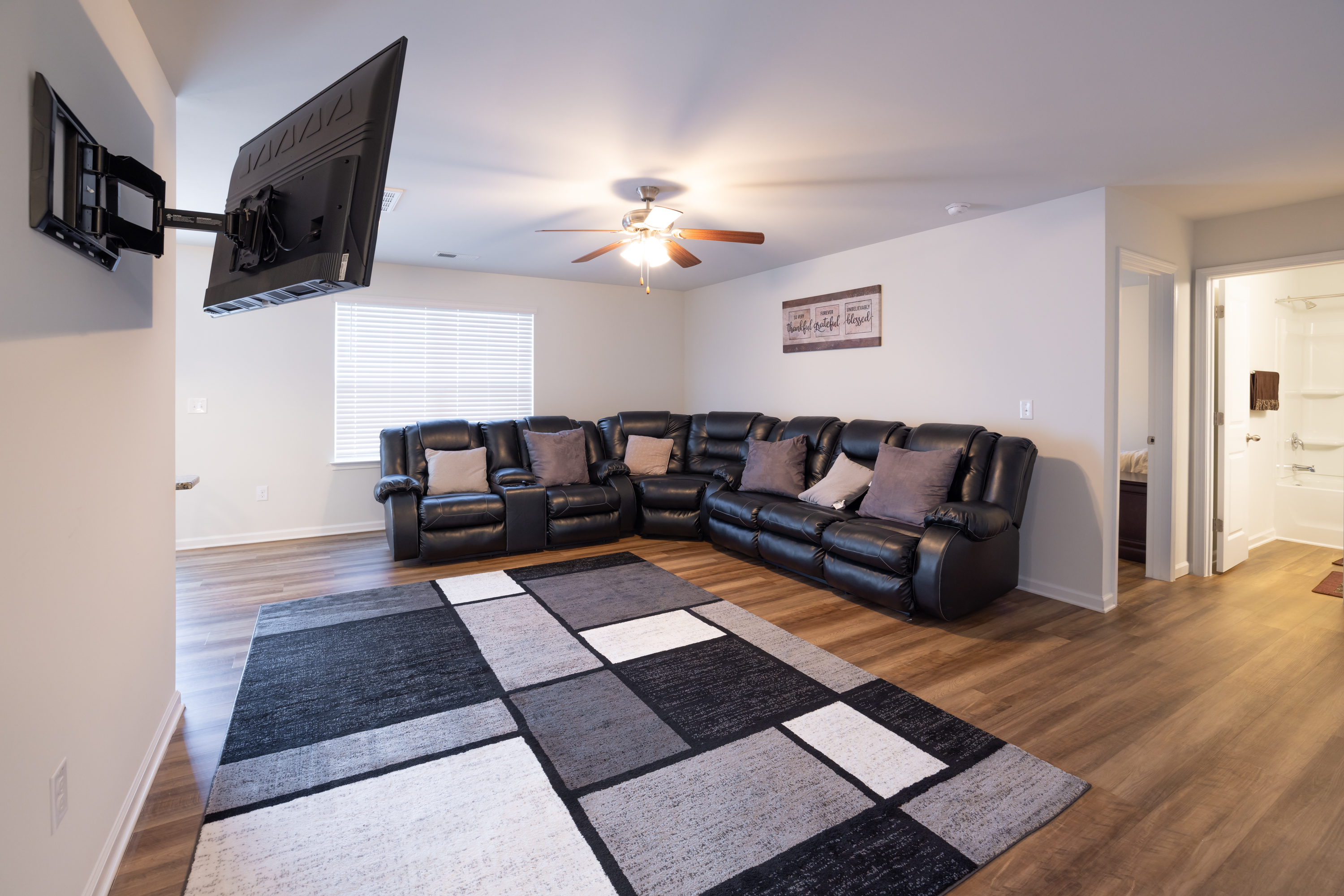
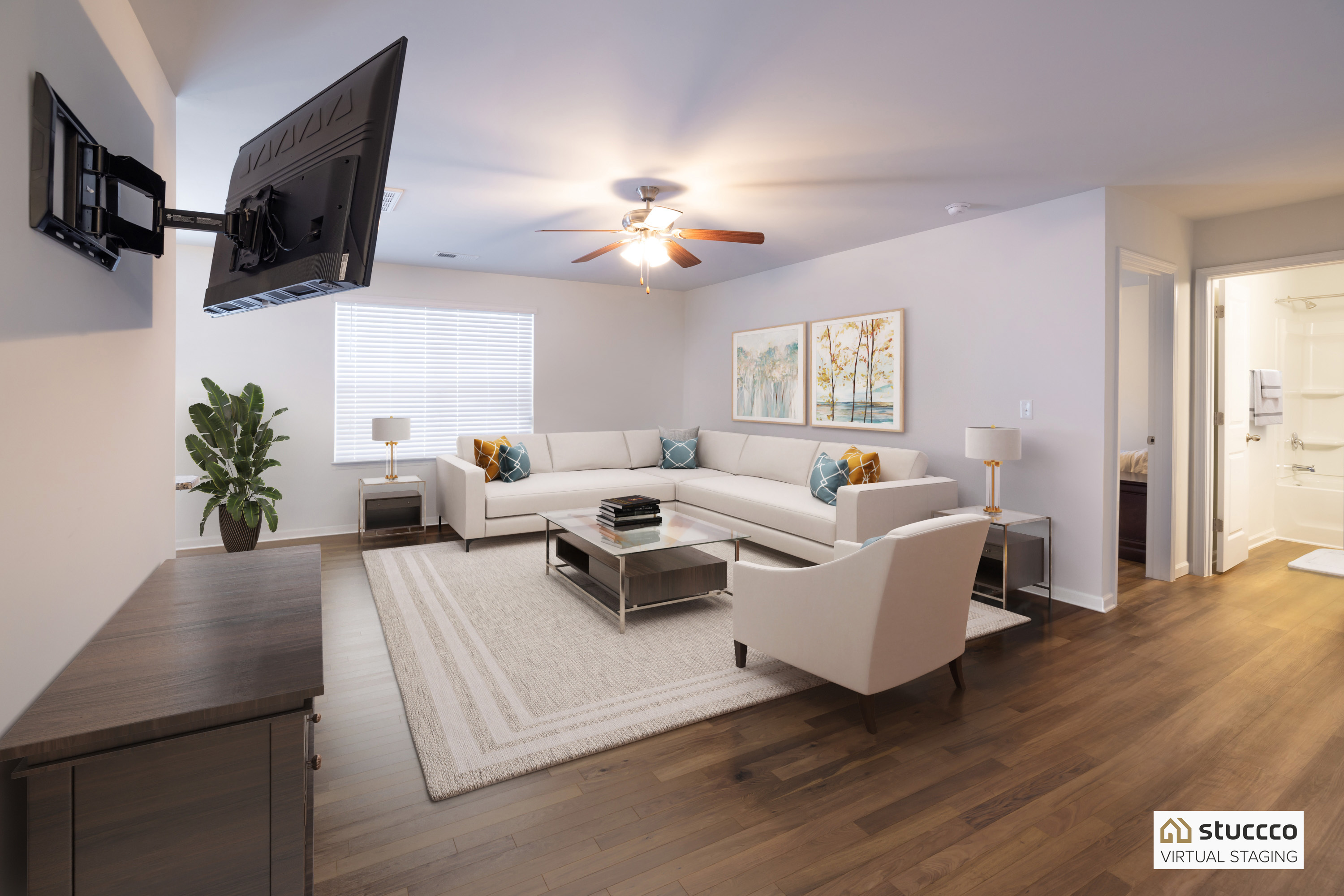
Living room before and after virtual staging
For a more detailed breakdown on the pros and cons of each type of staging, read traditional home staging vs. virtual staging.
How Much Does Home Staging Cost?
The biggest question most people have about home staging is the price. And unfortunately, there isn't one number that would accurately depict the cost of home staging.
In fact, if you Google "average cost of home staging," you'll see answers like $1,500 (Orchard) or $2,000-2,400 (Realtor). But those are generalized figures at best because there are so many factors that affect the cost of home staging across the country. Those factors include:
- Home size
- Cost of living/average home values in each city
- Specifications necessary for each property
- Logistics of individual properties (Apartments or condos on the 10th floor may incur added fees)
- Type of home staging company or service
- Home staging packages (Consultations, upfront fees vs ongoing monthly contracts)
One of our Stuccco team members spent over a decade as a professional home stager, and she estimates that home staging costs about 1% of the home's sale price.
By that estimate, the cost of staging a home could look like this:
- Cost of staging a $200,000 home: $2,000
- Cost of staging a $350,000 home: $3,500
- Cost of staging a $500,000 home: $5,000
- Cost of staging a $750,000 home: $7,500
- Cost of staging a $1,000,000 home: $10,000
- Cost of staging a $1.5 million home: $15,000
In contrast, Stuccco virtual staging costs $29 per photo. If you add multiple additional services to one or all of your photos, they could cost a maximum of $85 each.
The average Stuccco order costs $204 and includes 6 listing photos.
If you are staging a home worth about $200,000, that means virtual staging costs 90% less than traditional staging. If it's a home worth $750,000, virtual staging could cost 97% less.
However, there are many factors that affect the cost of both traditional and virtual staging, like the home's size, value, the number of rooms, and the number of photos to stage. Let's look at a few examples, including a few with the maximum virtual staging costs:
| House Value | Traditional Home Staging Cost | Virtual Staging Photos & Costs | Total Savings |
| $250k house | $2,500 | 6 photos for $29 each =$174 | 93% |
| $250k house | $2,500 | 6 photos for $85 each = $510 | 80% |
| $800k house | $8,000 | 12 photos for $39 each = $468 | 95% |
| $800k house | $8,000 | 15 photos for $78 = $1,700 | 85% |
| $1.5 million house | $15k | 15 photos for $39 each= $585 | 96% |
| $1.5 million house | $15k | 20 photos for $85 = $1,700 | 89% |
Even if you place a virtual staging order with the absolutely maximum costs (which is highly unlikely), you will still spend at least 80% less--and get the same result as traditional home staging.
With these prices, you can also easily afford to hire a real estate photographer to even further improve the quality of your listing photos and your potential return on investment.
Related: Virtual Staging for Luxury Homes: Is It Right for Yours?
For even more specific details, learn more about virtual staging in these cities:
- Virtual staging in New York City
- Chicago
- Denver
- Austin
- Houston
- Orlando
- Phoenix
- San Diego
- San Francisco
- San Jose
- Washington DC
- Los Angeles
Who Pays for Home Staging?
Another confusing piece of home staging is determining who actually pays for it; is it the real estate agent or the home sellers?
Since there are already so many different factors surrounding home staging--and also because most agents across the country can't afford traditional staging--there is no common etiquette or expectations. Instead, the answer depends on each unique situation.
A very small percentage of high-end or luxury real estate brokerages will include home staging with every listing. However, in most other cases, the decision or responsibility will fall on the homeowner.
Some real estate agents pay for an initial consultation with a professional home stager, then they leave the remaining decision up to the sellers. They will only stage the home if the seller chooses to pay for it.
Unfortunately, most real estate professionals don't even bring up the topic of home staging to clients! Even if paying for traditional home staging is completely out of the question, we strongly suggest that real estate agents communicate this to your listing clients. You can tell them in person or even include it in your listing agreement or comparative market analysis.
With virtual staging, however, you can evaporate any potential tension in this conversation.
Since virtual staging costs only an average of $200, most real estate agents are able to easily afford this fee and offer virtual staging as an integral part of their listing marketing strategy. When possible, this is the best option for real estate agents, because it provides your clients with an incredible level of service, gives you control over the way the home appears on the listing, and ultimately helps sell the home faster and for more money.
Including this service almost automatically helps you stand out from other local agents and makes it easier to market yourself as an agent.

Advertising virtual staging services as a realtor by @realtor_trish_arizona
If you're looking for ways to get more real estate listings, look no further!
Plus, agents who include virtual staging with all of their listings can take advantage of Stuccco's bulk discounts and save even more money on home staging.
The Verdict: Is Home Staging Worth It?
Home staging is an incredibly powerful tool in the world of real estate--but only when it's done correctly. Just adding furniture to an empty space (whether the furniture is physical or digital) does not necessarily help a home sell more effectively.
When you understand the purpose, pros, and cons of home staging, you can choose the right home staging service and see how your listings sell faster, easier, and for more money.
Virtual staging exists to make home staging more accessible to real estate professionals and homeowners who want to help prospective buyers see the full potential of their home. It's easily the best and most efficient way to increase the sale price of a home--ready to start for free?
Place your first virtual staging order for free!
